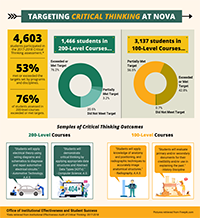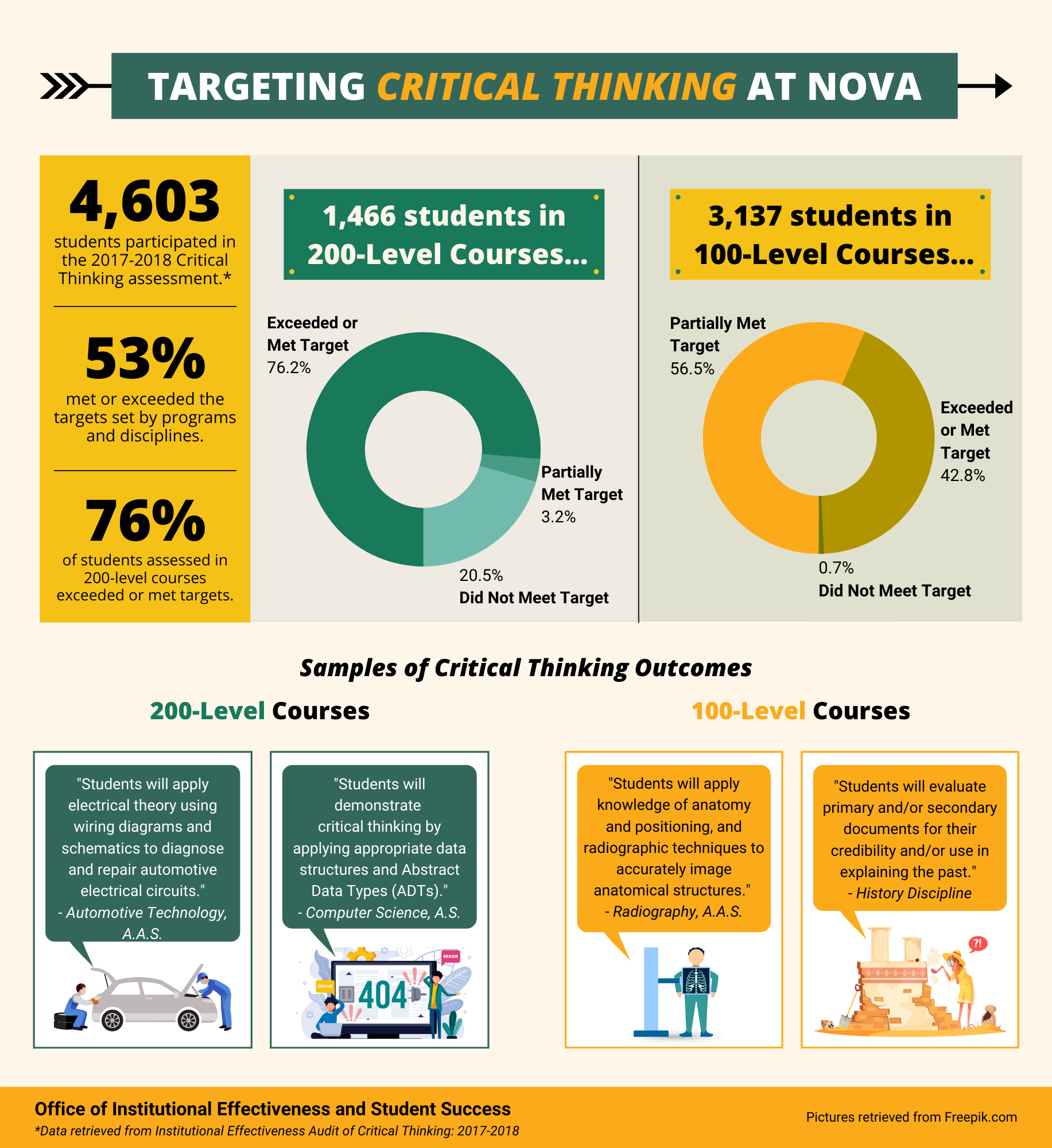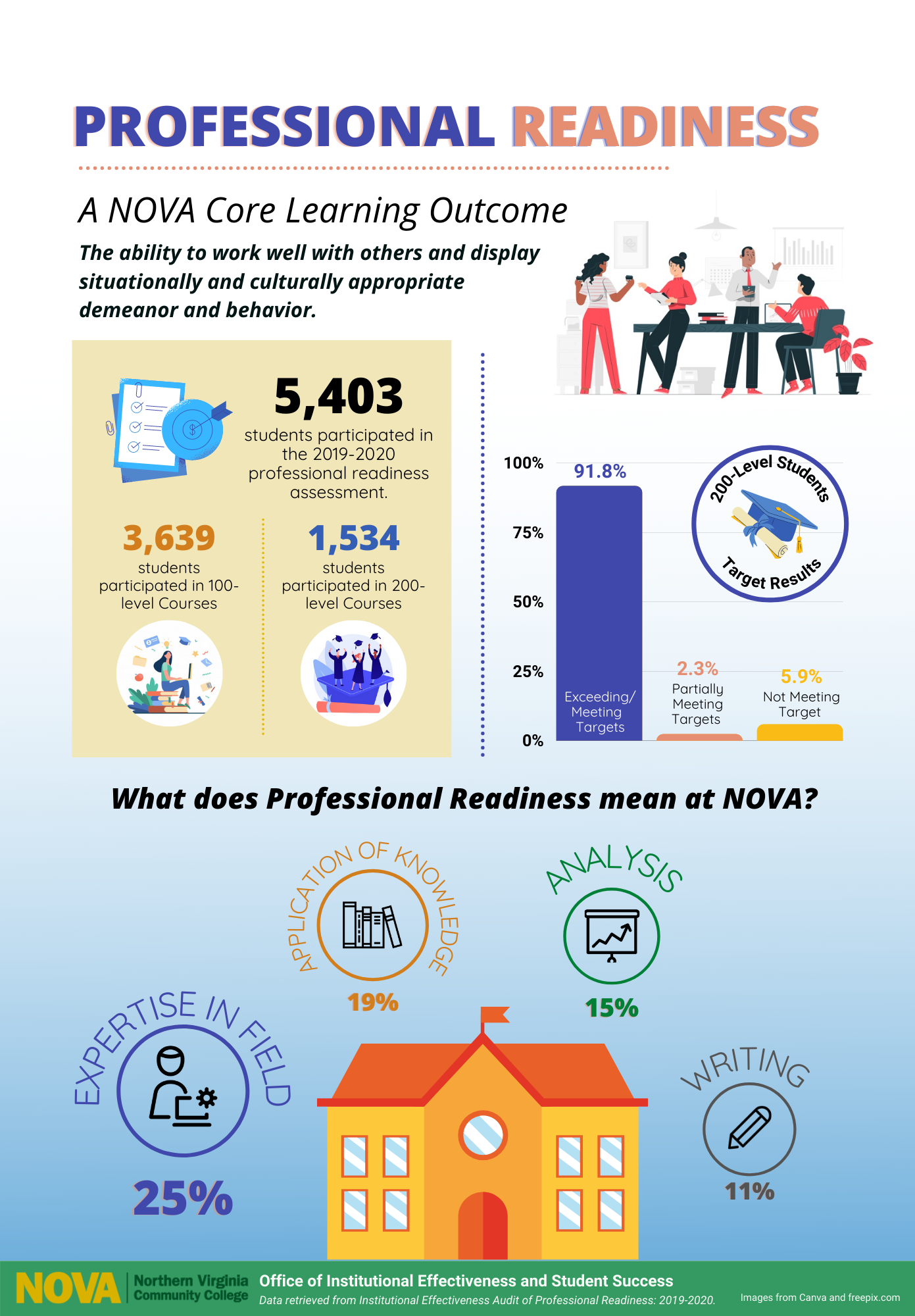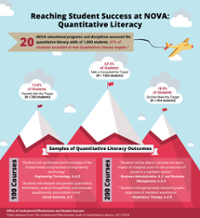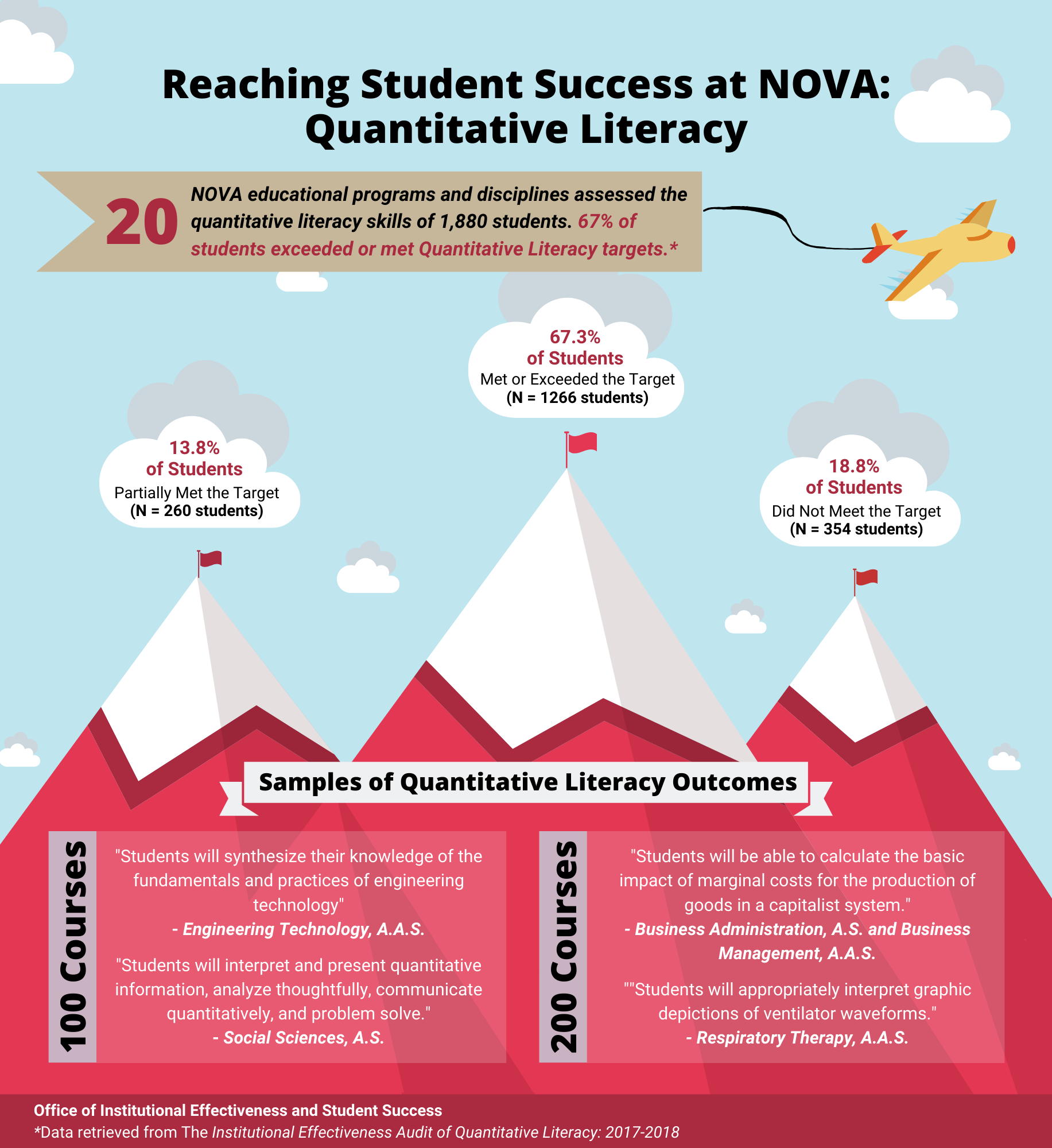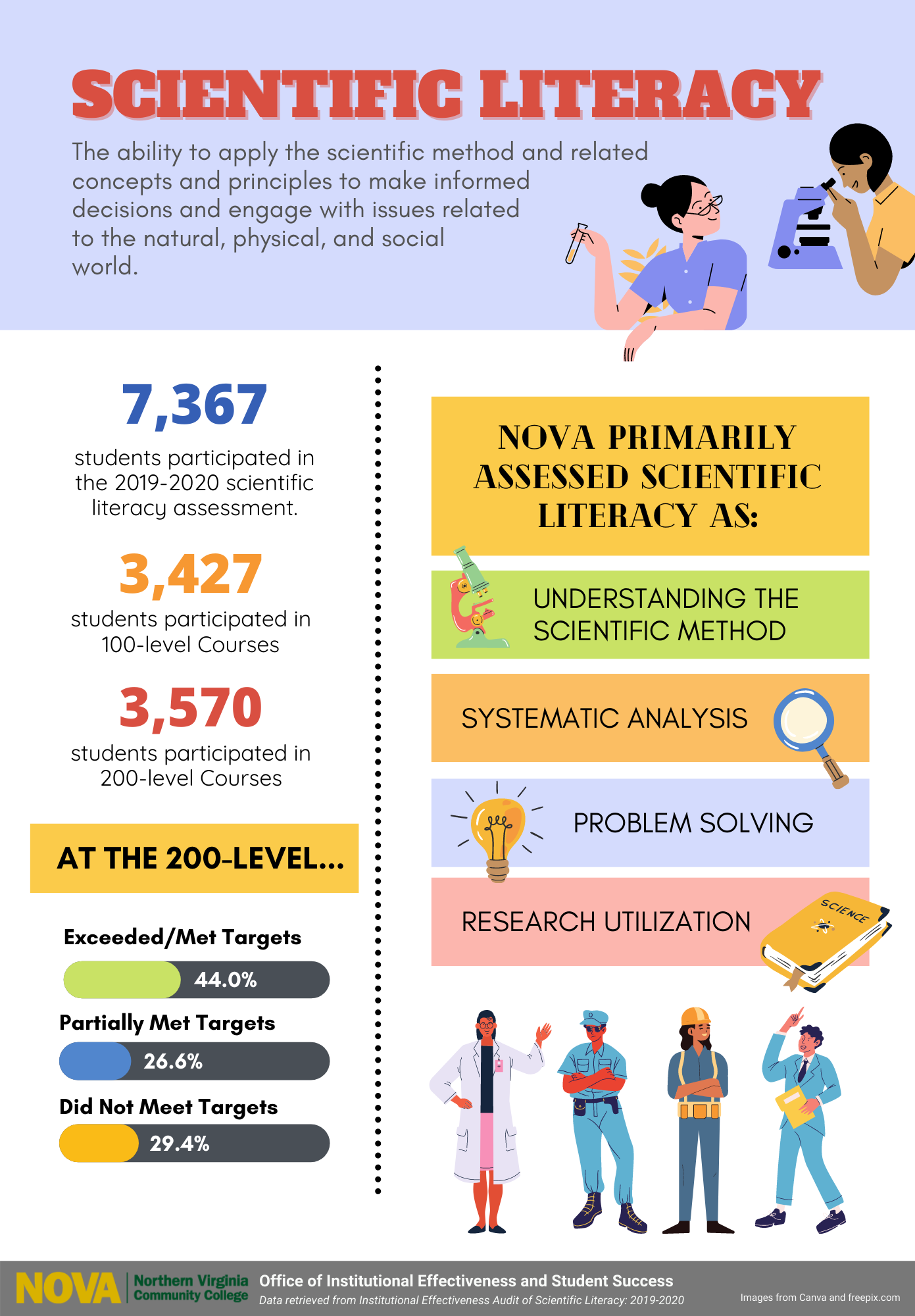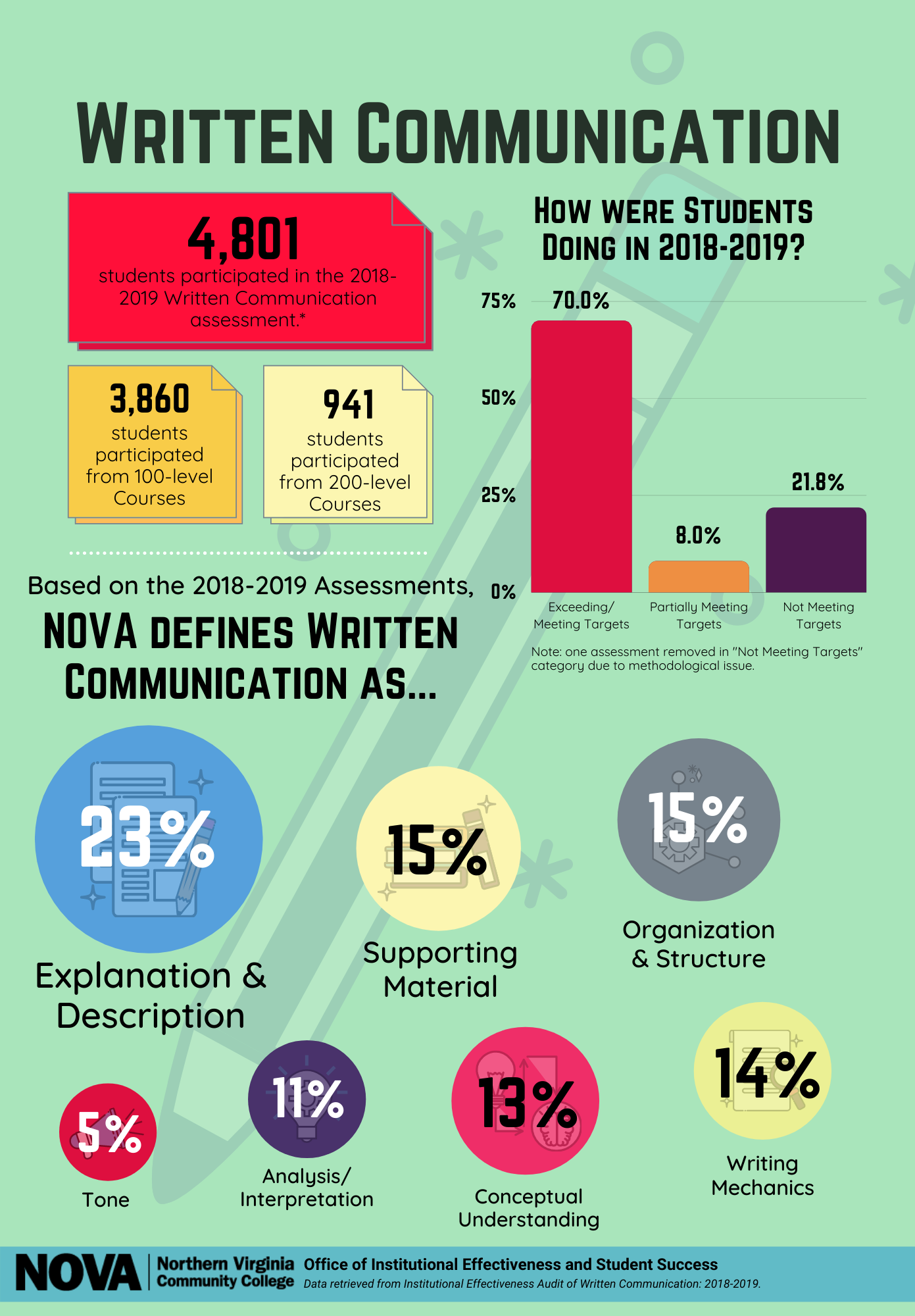2018-2019 Assessment of Civic Engagement
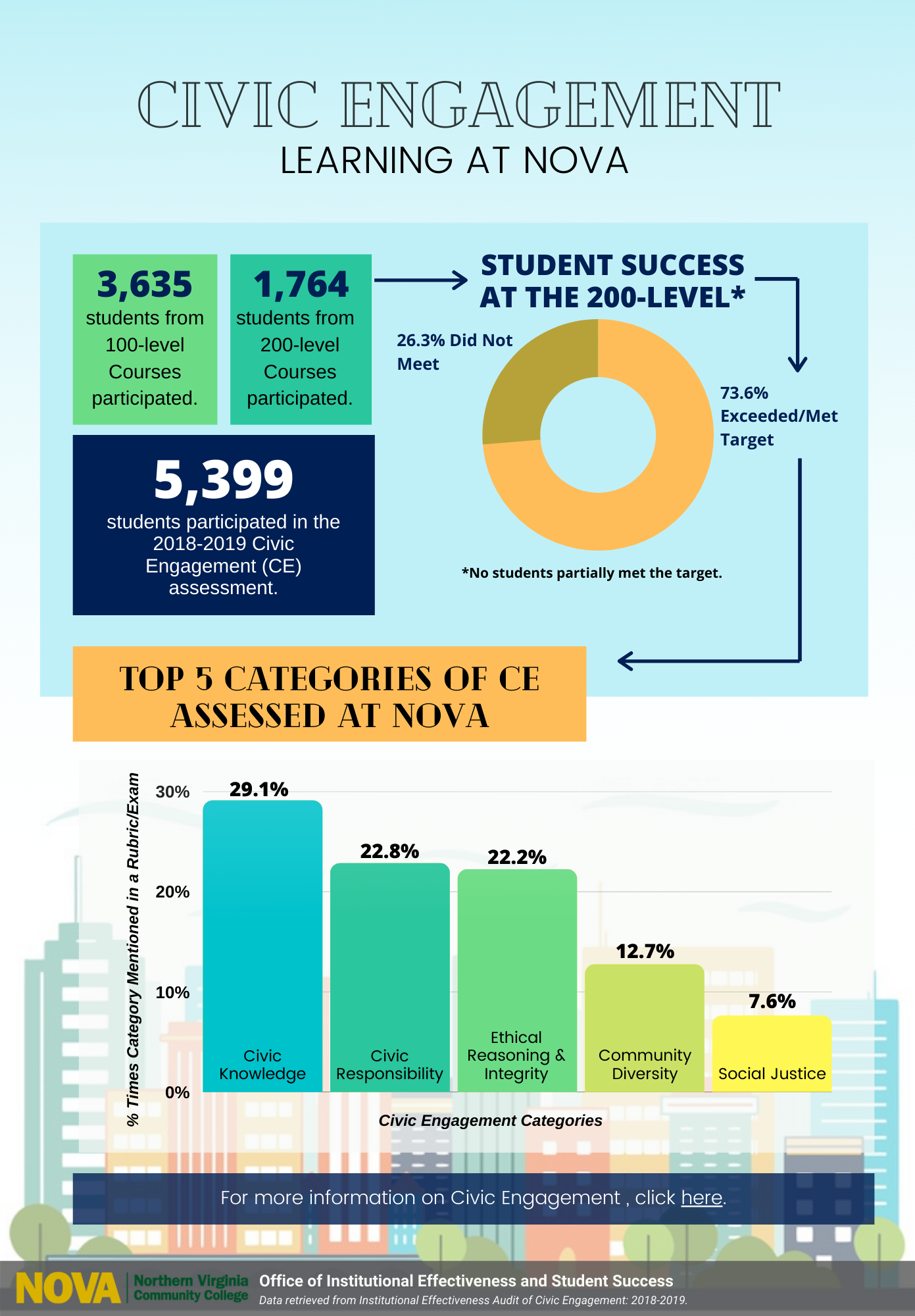
- 5,457 NOVA students took part in the assessment process.
- 17 programs and disciplines assessed civic engagement.
- 84% of educational programs and disciplines have already incorporated civic engagement into their learning outcomes prior to the 2018-2019 assessment.
- Rubrics and exams primarily assessed civic engagement in terms of civic knowledge or civic responsibility (see above for definitions).
- Students learned how to reduce their carbon footprint, act ethically and civically in their field of studies, and practice social responsibility.
Click here to learn more about civic engagement at NOVA.
For more information on students’ civic engagement at NOVA, check out the 2018-2019 Institutional Effectiveness Audit of Civic Engagement.
